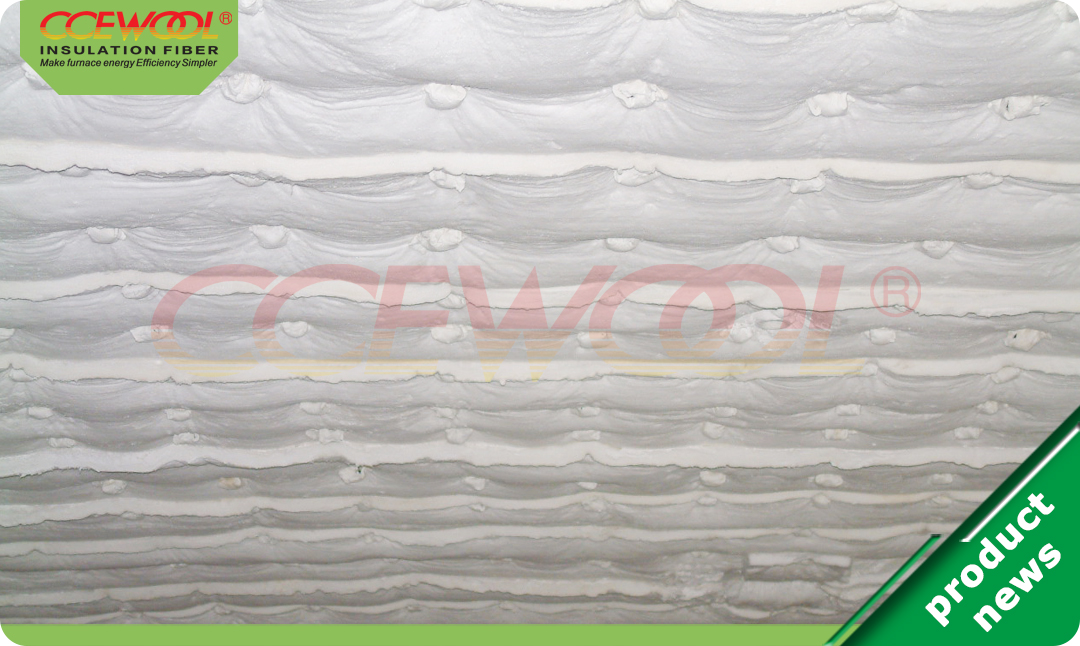In steel production, normalizing furnaces play a crucial role in reheating and homogenizing the microstructure of steel. Operating typically at 850–950°C, they must maintain a stable and uniform thermal field over long cycles to ensure refined grain structure and consistent mechanical properties. As a key piece of thermal equipment that operates continuously in steel plants, the energy efficiency of normalizing furnaces directly affects both production costs and green manufacturing performance.
Industry Challenge: Energy Loss Caused by High-Temperature Heat Dissipation
During operation, a large amount of heat continuously escapes through the furnace walls and roof. Traditional refractory brick or castable linings have high thermal conductivity and large heat storage capacity, resulting in low fuel utilization, long heating times, and high shell temperatures.
This ongoing “invisible energy loss” not only increases fuel costs but also subjects the furnace shell to long-term thermal fatigue, accelerating structural aging and maintenance frequency. These issues have become a key bottleneck limiting improvements in normalizing furnace efficiency.
The Technical Advantages of CCEWOOL® Refractory Ceramic Fiber Blanket
To address these challenges, CCEWOOL® refractory ceramic fiber blanket was developed to provide a high-efficiency, energy-saving, and sustainable insulation lining solution for normalizing furnaces.
With its low thermal conductivity, lightweight structure, and excellent thermal shock resistance, it offers significant performance advantages compared to traditional linings.
Ultra-Low Thermal Conductivity for Significant Heat Loss Reduction
CCEWOOL® refractory ceramic fiber blanket is made from in-house high-purity ceramic fiber wool, produced using imported high-speed centrifuges operating at 11,000 r/min. The fibers are fine, uniform, and have a shot content below 15%.At 1000°C, its thermal conductivity is only 0.22 W/m·K, approximately 60% lower than that of conventional refractory bricks. This effectively suppresses heat dissipation from the furnace body and significantly reduces shell temperature.
Lightweight Flexible Structure Improves Furnace Thermal Response
With a density of only 96–160 kg/m³—one-eighth that of brick linings—CCEWOOL® refractory ceramic fiber blanket is lightweight and has extremely low heat storage.
Its flexible fiber structure allows it to respond rapidly to temperature changes, shortening heating and cooling cycles while improving uniformity of the thermal field.
The material can be easily installed in multi-layer configurations, reducing joint leakage and minimizing thermal bridges for improved insulation efficiency.
Stable and Reliable with Superior Thermal Shock Resistance
CCEWOOL® refractory ceramic fiber blanket is manufactured using the company’s proprietary double-sided needling process, achieving tensile strength over 75 kPa.
The three-dimensional interwoven fiber structure provides excellent elasticity and durability, maintaining integrity under repeated thermal cycling and mechanical vibration.
Even during long-term high-temperature operation, the lining remains stable—without loosening, collapsing, or powdering—effectively extending equipment lifespan and reducing maintenance frequency.
Empowered by Patented Technology: Intelligent Manufacturing Ensures Consistent Performance
The production of CCEWOOL® refractory ceramic fiber blanket is fully integrated with the company’s self-developed and officially registered software system:
“Ceramic Fiber Products Intelligent Manufacturing Management System V1.0.”
This intelligent platform performs real-time monitoring and data modeling of key production parameters such as melting temperature, fiberization speed, airflow drawing rate, needling density, drying curve, and product density.By automatically optimizing process matching at every stage—from fiber formation and rolling to shaping—the system ensures consistent fiber uniformity, precise thickness, and stable thermal conductivity.Through this digitalized intelligent control, every roll of CCEWOOL® refractory ceramic fiber blanket maintains stable insulation performance and structural strength during high-temperature operation, achieving both energy-efficient manufacturing and product consistency.
Application Results and Energy-Saving Benefits
In multiple steel plant retrofit projects, replacing traditional refractory linings with CCEWOOL® refractory ceramic fiber blanket delivered outstanding results:
-
Furnace shell temperature reduced by 35–45°C
-
Fuel consumption decreased by 15–20%
-
Lining service life extended by 1.5–2 times
-
Maintenance intervals increased, with significantly lower maintenance costs
These results demonstrate that CCEWOOL® refractory ceramic fiber blanket not only effectively reduces energy consumption but also improves equipment stability and production continuity, providing strong support for steel manufacturers in achieving cost reduction, efficiency improvement, and green manufacturing.
Conclusion: Building Efficient and Sustainable Furnaces with Smart Materials
In the steel heating process, the pursuit of both energy efficiency and product quality is driving the evolution of furnace lining materials toward lightweight, flexible, and intelligent solutions.Through proprietary patented technology and intelligent manufacturing systems, CCEWOOL® refractory ceramic fiber blanket provides high-purity fibers, excellent stability, and low energy consumption to construct efficient, durable, and sustainable insulation systems for normalizing furnaces.From energy savings to extended service life, CCEWOOL® continues to advance the steel industry toward a new era of green and efficient production through innovation in refractory fiber materials.
Post time: Oct-28-2025


